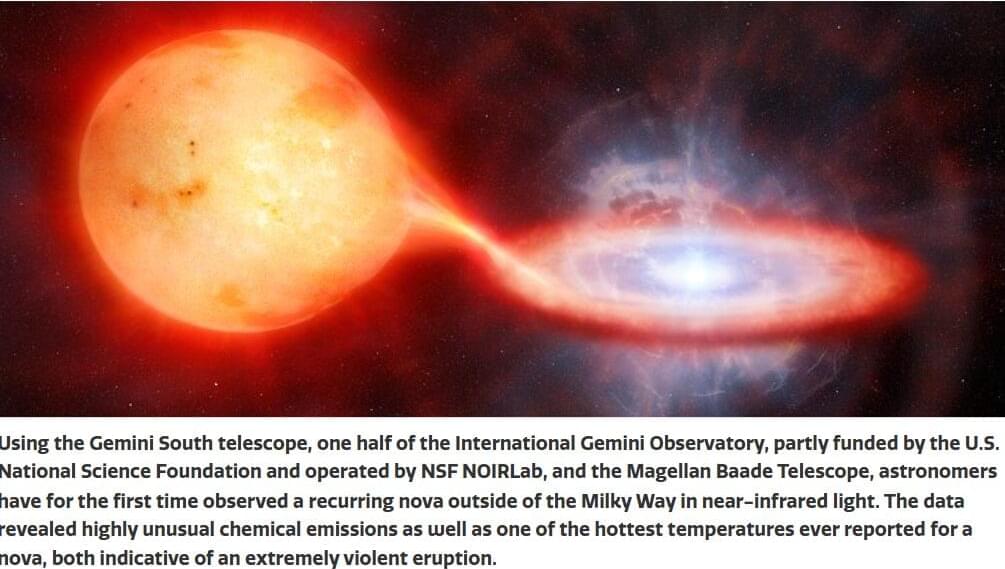Astronomers uncover extremely hot and violent eruption from first ever near-infrared analysis of a recurrent nova outside of the Milky Way Galaxy. Using the Gemini South telescope, one half of the International Gemini Observatory, partly funded by the U.S. National Science Foundation and operated by NSF NOIRLab, and the Magellan Baade Telescope, astronomers have for the first time observed a recurring nova outside of the Milky Way in near-infrared light. The data revealed highly unusual chemical emissions as well as one of the hottest temperatures ever reported for a nova, both indicative of an extremely violent eruption.
Nova explosions occur in binary star systems in which a white dwarf — the dense remnant of a dead star — continually siphons stellar material from a nearby companion star. As the outer atmosphere of the companion gathers onto the surface of the white dwarf it reaches temperatures hot enough to spark an eruption.
Almost all novae discovered to-date have been observed to erupt only once. But a few have been observed to erupt more than once, and are classified as recurrent novae. The span between eruptions for these novae can vary from as little as one year to many decades [1].
